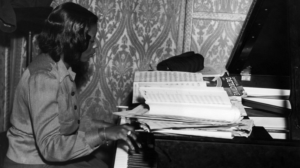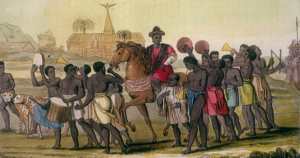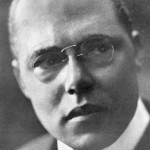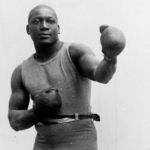They were once America’s cruelest, richest slave traders. Why does no one know their names?
Isaac Franklin and John Armfield committed atrocities they appeared to relish
Photo: The exterior of the Franklin and Armfield Slave Office, today the Freedom House Museum, in Alexandria. (Ricky Carioti/The Washington Post )
(The Washington Post) The two most ruthless domestic slave traders in America had a secret language for their business.
Slave trading was a “game.” The men, Isaac Franklin and John Armfield, were daring “pirates” or “one-eyed men,” a euphemism for their penises. The women they bought and sold were “fancy maids,” a term signifying youth, beauty and potential for sexual exploitation — by buyers or the traders themselves.
Rapes happened often.
“To my certain knowledge she has been used & that smartly by a one eyed man about my size and age, excuse my foolishness,” Isaac Franklin’s nephew James — an employee and his uncle’s protege — wrote in typical business correspondence, referring to Caroline Brown, an enslaved woman who suffered repeated rape and abuse at James’s hands for five months. She was 18 at the time and just over five feet tall.
Franklin and Armfield, who headquartered their slave trading business in a townhouse that still stands in Alexandria, Va., sold more enslaved people, separated more families and made more money from the trade than almost anyone else in America. Between the 1820s and 1830s, the two men reigned as the “undisputed tycoons” of the domestic slave trade, as Smithsonian Magazine put it. (more)
How Mary Lou Williams Shaped The Sound Of The Big-Band Era
(NPR) “The greatest woman jazz pianist in captivity.” “The greatest woman jazz pianist in the world.” “Highly acclaimed as a deluxe tickler of the ivories.” “One of the foremost swing pianists of either sex.” By 1936, then-25-year-old Mary Lou Williams’ reputation already preceded her. The pianist’s primary gig — Kansas City band Andy Kirk and His Clouds of Joy — was taking off, booked for packed dances around the country alongside artists like Louis Armstrong. Williams was the group’s marquee attraction, a little for the novelty of a woman pianist but mostly because of her undeniable artistry — one critic, for example, questioned whether Art Tatum could really swing like Mary Lou Williams, with no caveat in sight. She’d even already garnered enough acclaim to record solo sides.
But Williams’ remarkable, prescient playing with the Clouds of Joy was only part of the explanation for her and the band’s success. Her arrangements for the group, which she’d started contributing at age 19, helped spark their national breakthrough — and gave her a role even more unusual than “woman pianist.” “Until the Real Thing Comes Along,” with Williams’ arrangement, had become “the biggest song of 1936” according to one Virginia paper; as a result, she got calls from bandleaders including Benny Goodman, Louis Armstrong and Duke Ellington for fresh versions of the hits of the day, as well as her own compositions. (more)
10 African Civilizations More Amazing Than Ancient Egypt
(Enlightenment Africa) Unknown to most people, hundreds of smaller kingdoms have popped up throughout Africa’s history, with some eventually growing into powerful empires. These vast nations united Africa, managed wealthy trade routes, and controlled a potluck of cultures. Great Civilizations…(more)
TIPHC Bookshelf
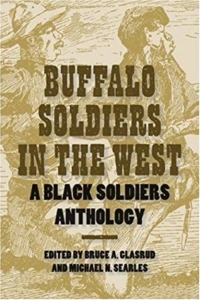 Published scholarship on black history in Texas is growing and we’d like to share with you some suggested readings, both current and past, from some of the preeminent history scholars in Texas and beyond. We invite you to take a look at our bookshelf page – including a featured selection – and check back as the list grows. A different selection will be featured each week. We welcome suggestions and reviews. This week, we offer, “Buffalo Soldiers in the West, A Black Soldiers Anthology,” edited by Bruce A. Glasrud and Michael N. Searles.
Published scholarship on black history in Texas is growing and we’d like to share with you some suggested readings, both current and past, from some of the preeminent history scholars in Texas and beyond. We invite you to take a look at our bookshelf page – including a featured selection – and check back as the list grows. A different selection will be featured each week. We welcome suggestions and reviews. This week, we offer, “Buffalo Soldiers in the West, A Black Soldiers Anthology,” edited by Bruce A. Glasrud and Michael N. Searles.
In the decades following the Civil War, scores of African Americans served in the U.S. Army in the West. The Plains Indians dubbed them buffalo soldiers, and their record in the infantry and cavalry, a record full of dignity and pride, provides one of the most fascinating chapters in the history of the era.
This anthology focuses on the careers and accomplishments of black soldiers, the lives they developed for themselves, their relationships to their officers (most of whom were white), their specialized roles (such as that of the Black Seminoles), and the discrimination they faced from the very whites they were trying to protect. In short, this volume offers important insights into the social, cultural, and communal lives of the buffalo soldiers.
The selections are written by prominent scholars who have delved into the history of black soldiers in the West. Previously published in scattered journals, the articles are gathered here for the first time in a single volume, providing a rich and accessible resource for students, scholars, and interested general readers. Additionally, the readings in this volume serve in some ways as commentaries on each other, offering in this collected format a cumulative mosaic that was only fragmentary before.
Volume editors Glasrud and Searles provide introductions to the volume and to each of its four parts, surveying recent scholarship and offering an interpretive framework. The bibliography that closes the book will also commend itself as a valuable tool for further research.
This Week in Texas Black History
Oct. 13
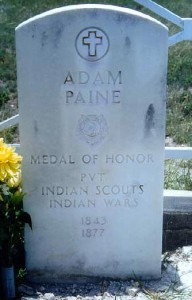 In 1875, on this day, Adam (or, “Adan”) Paine (1843-1877), a black Seminole, was awarded the Congressional Medal of Honor. Paine was a scout at Fort Duncan, Texas, and received the MOH for his actions during a battle at Quitaque Peak where he defended himself and four other scouts against several bands of Comanche Indians on September 26, 1874. Greatly outnumbered, the scouts fled, fighting as they went, though Paine held back to protect the others, allowing them to get away as he fired repeatedly at their pursuers. Payne’s horse was shot from under him, however, Paine continued to fight and eventually shot the rider of one horse, mounted the animal and made his escape. Thanks to his efforts during the engagement, all of the scouts survived. Paine’s commanding officer, Colonel Ranald S. Mackenzie, said that Paine “has more cool (and) daring than any scout I have ever known.”
In 1875, on this day, Adam (or, “Adan”) Paine (1843-1877), a black Seminole, was awarded the Congressional Medal of Honor. Paine was a scout at Fort Duncan, Texas, and received the MOH for his actions during a battle at Quitaque Peak where he defended himself and four other scouts against several bands of Comanche Indians on September 26, 1874. Greatly outnumbered, the scouts fled, fighting as they went, though Paine held back to protect the others, allowing them to get away as he fired repeatedly at their pursuers. Payne’s horse was shot from under him, however, Paine continued to fight and eventually shot the rider of one horse, mounted the animal and made his escape. Thanks to his efforts during the engagement, all of the scouts survived. Paine’s commanding officer, Colonel Ranald S. Mackenzie, said that Paine “has more cool (and) daring than any scout I have ever known.”
Oct. 13
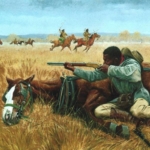 On this day in 1864 the Elm Creek Raid occurred, during which a band of several hundred Kiowa and Comanche Indians raided a settlement in the Elm Creek Valley (northwest of Dallas and South of Wichita Falls) where Britt Johnson, a ranch foreman and former slave, and his family lived. During the raid, Johnson’s son, Jubal, was among several settlers killed. Johnson’s wife, Mary, and two daughters were among the hostages taken into Indian Territory (Oklahoma). Johnson spent the next year traveling into the Territory and finally locating his family. Johnson worked with Comanche Chief Asa-Havey to pay a ransom and regain his family. The story of Johnson’s quest (fact or fiction) was the inspiration for Alan LeMay’s 1954 novel, The Searchers, which director John Ford would turn into a movie of the same name in 1956 starring John Wayne.
On this day in 1864 the Elm Creek Raid occurred, during which a band of several hundred Kiowa and Comanche Indians raided a settlement in the Elm Creek Valley (northwest of Dallas and South of Wichita Falls) where Britt Johnson, a ranch foreman and former slave, and his family lived. During the raid, Johnson’s son, Jubal, was among several settlers killed. Johnson’s wife, Mary, and two daughters were among the hostages taken into Indian Territory (Oklahoma). Johnson spent the next year traveling into the Territory and finally locating his family. Johnson worked with Comanche Chief Asa-Havey to pay a ransom and regain his family. The story of Johnson’s quest (fact or fiction) was the inspiration for Alan LeMay’s 1954 novel, The Searchers, which director John Ford would turn into a movie of the same name in 1956 starring John Wayne.
Oct. 15
Houstonian Emmett Scott was appointed Special Assistant to the Secretary of War, Newton Baker, on this day in 1917 as a liaison between black soldiers and the War Department amid rising racial tensions in the country. Among Scott’s accomplishments in that role were:
- The formation of a Speakers’ Bureau, or “Committee of One Hundred,” to enlighten black Americans on the war aims of the government.
- The continuance of training camps for black officers and the increase in their number and increasing their scope of training.
- Betterment of the general conditions in the camps where blacks were stationed in large numbers, and positive steps to reduce friction between
- The opening of every branch of the military service to colored men, on equal terms with all others, and the commissioning of many colored men as
officers in the Medical Corps. - A report about conditions facing African-Americans during the period, which were published in 1919 as The American Negro in the World War.
Oct. 18
On this day in 1912, World Heavyweight Champion and Galveston native Jack Johnson was arrested for violating the Mann Act against transporting women across state lines for immoral purposes, specifically prostitution, because of his relationship with a white woman who was Johnson’s fiancée. Her refusal to cooperate in his prosecution doomed the case though Johnson would be arrested again less than a month later on similar charges, however, the woman involved this time testified against him. Johnson was convicted by an all-white jury and sentenced to a year and a day in prison, but he jumped bail and left the country for France. He wouldn’t fight for over a year until he defeated Jim Johnson, an African-American, in Paris in the first fight for the heavyweight championship between two black men.
Oct. 19
Two-time Grammy Award winner Jennifer Holliday was born on this day in 1960 in Houston. Inspired by congresswoman and fellow Houston native Barbara Jordan to be a good citizen and a good person, Holliday began singing in the Pleasant Grove Baptist Church choir. She gained fame in the starring role of Effie “Melody” White in the Broadway production “Dreamgirls,” for which Holiday earned a Tony Award for Best Actress in a Musical. In the show, she sings “And I Am Telling You I’m not Going,” which also reached No. 1 on R&B charts.
Blog: Ron Goodwin, Ph.D., author, PVAMU history professor
Ron Goodwin is an assistant professor of history at Prairie View A&M University. Even though he was a military “brat,” he still considers San Antonio home. Like his father and brother, Ron joined the U.S. Air Force and while enlisted received his undergraduate degree from Texas Lutheran University in Seguin, Texas. After his honorable discharge, he completed graduate degrees from Texas Southern University. Goodwin’s book, Blacks in Houston, is a pictorial history of Houston’s black community. His most recent book, Remembering the Days of Sorrow, examines the institution of slavery in Texas from the perspective of the New Deal’s Slave Narratives.
Recent Posts
Football is still football
October 14th, 2019
Since we’re into the football season I thought it was time to interject my two cents. I’ve noticed several teams starting black quarterbacks these days. Some because of injury, but others have been under center since training camp. By my count, the first weekend of the National Football League season in September saw nine African…(more)
1960s Revisited
Over the last few years our society has spent a great amount of energy reliving and analyzing the 1960s. Every event – from the deaths of the Kennedy brothers, MLK and Malcolm X, landing on the moon, war protests, and the hippie revolution – has been scrutinized through the microscope of history. The interesting thing about history’s microscope, though, is that it often blots out the nasty and the ugly. The concept of revisionism centers…(more)
Submissions wanted
Historians, scholars, students, lend us your…writings. Help us produce the most comprehensive documentation ever undertaken for the African American experience in Texas. We encourage you to contribute items about people, places, events, issues, politics/legislation, sports, entertainment, religion, etc., as general entries or essays. Our documentation is wide-ranging and diverse, and you may research and write about the subject of your interest or, to start, please consult our list of suggested biographical entries and see submission guidelines. However, all topics must be approved by TIPHC editors before beginning your research/writing.
We welcome your questions or comments. Please contact Michael Hurd, Director of TIPHC, at mdhurd@pvamu.edu.

